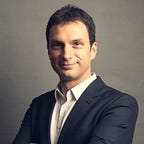The moment when software development and business came together
The Goal
The Ingenii team has been building its data analytics platform for some months now. The platform is already in use with a number of clients, but we had bigger goals to make it truly SaaS, and build further to integrate our quantum computing solutions into the analytics workspaces.
The build was focusing on an efficient and functional UI, backed by a scalable API, and with data analytics workspace which can access underlying quantum computing and quantum circuits.
On the business side, we had to ramp up on the product research. Even more crucially, we had to kick off our funding round, find the right fit of investors to talk to and engage as we built out our vision.
Failing is Normal
Grinding away at a big, complex project will of course have the usual challenges, setbacks, twists and turns. Sometimes it feels like there is that successful step forward, only to be knocked back a few steps straight after. At these times I’m often reminded of Jack Conte, the CEO of Patreon and his presentation with the endless paper balls. If you’re in the midst of a startup or scaling your startup, this is a good video to watch.
And I must agree, “this is normal“ to go through these challenges and failures and be heartened to keep learning from them. The eventual reward is when there is that significant breakthrough, the lurch forward with success that makes it all worthwhile.
The Build
The initial application was stood up in 2021, but we suffered from features and requirements which were not well defined. Whilst we iterated through the builds with some velocity it was not delivering the features that we were happy with. There seemed to be a disconnect between end user requirements, interface experience and vision.
In addition, when in the midst of development it’s easy to underestimate effort and be overly optimistic. This was an early mistake and there was a team joke that whatever the estimate it should be doubled and then 30% added on! This was evident in some earlier burndown charts which were going in every direction except down.
We had an end goal vision and had some initial clients, but it was not a sufficiently broad source of feedback to validate and capture enough different scenarios and use cases. Through the development, we had some fundamental shifts in our architecture and interface, which could have been better tested with enough client and/or investor feedback.
Bringing it Together
However, the last couple of weeks have seen a flurry of activity, our “snowflake” moment. It was fantastic to see the Ingenii team come together in a final sprint to a major milestone.
We managed to:
- Release our data analytics app into production, and kicked off onboarding of select pilot users and partners.
- Our Python abstraction layer for quantum algorithms came to life! We’ve started running proof of concept life science workloads on Azure Quantum hardware.
- Secure a lead investor for the pre-seed round, and we are excited to welcome White Shark Management as a strategic investor with all the experience they bring.
The bonus feel-good factor was the team nailing the most amazing burndown to our sprint since development started:
Our Lessons Learnt and Improvements
Be Agile and Ruthless with Scope
We had to fix the burndown charts going sideways or even upwards, and to be constantly learning and improving on our planning and estimates to deploy a feature. None of these improvements were revolutionary, but just being methodical with the agile methodology and iterating on improvements in each sprint.
We also learnt to be ruthless with scope. Questioning everything and focusing on exactly the minimum needed in the next sprint, the next release and the next milestone to get us to the next minimum viable product (MVP).
Talk to as Many (Potential) Clients
We found earlier on that one of the causes for the gaps in the vision was that we lacked enough feedback. In addition, we switched focus from financial services to life sciences, which meant we had to start over with some of the user research.
We ramped up our product research from potential clients, and we had to dig deeper to find the right roles to speak to. We started leveraging our network and LinkedIn to talk to as many data science experts with a background in the pharma, biotech and medical verticals.
Defining the Features
One of the interesting exercises was the team adopted a form of the “dreamer, realist and spoiler” sessions. This has worked really well to tie the business vision together with the tech and what is deliverable. The format has helped define features, and more importantly rule out features.
So, keep on learning and iterating on failures, don’t fear setbacks. For us, the constant learning will hopefully lead to yet more defining moments of success as we build the next phases of our quantum data analytics platform.
